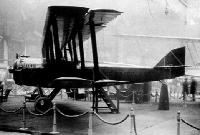
Ранние проекты "Latecoere"
В 1917 году Пьер Латекоэр создал компанию "Forges et Ateliers de Construction Latecoere", сборочный цех которой находился в районе Тулузы. В 1918 году появился его экспериментальный двухместный истребитель Latecoere 1. Проект оказался неудачным, и компания сконцентрировалась на разведывательном биплане Salmson 2 - было построено более 800 таких самолетов.
В 1919 году появился новый самолет - почтовый биплан Latecoere 3, имевший размах крыла 12,57 м, массу в снаряженном виде 1675 кг, максимальную скорость 200 км/ч и дальность полета 600 км.
<...>
Описание:
- Ранние проекты "Latecoere"
- Flight, January 1920
The Paris Aero Show 1919
Фотографии
-
Мировая Авиация 167
Почтовый биплан Latecoere 3 был оснащен девятицилиндровым двигателем Salmson Z.9 мощностью 260 л. с.
-
Flight 1920-01 / Flight
The Latecoere biplane, designed for fast mail service
-
Flight 1920-01 / Flight
The ailerons in the Latecoere machine were balanced, and, probably with the idea of making them more effective, the tip of the wing is thinned down to a fine edge in front of the aileron balance, giving somewhat the appearance of a Howard-Wright double-cambered wing section.
- Фотографии


